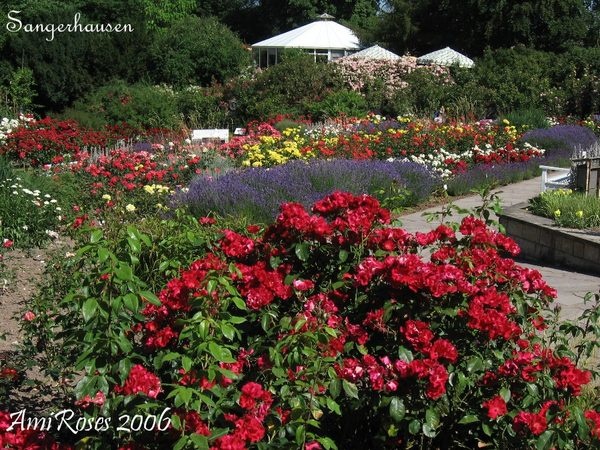|
|
Sangerhausen / Europarosarium Sangerhausen

Photo courtesy of AmiRoses
Rose (public) Garden
Listing last updated on Tue Jul 2025
Steinberger Weg 3 Sangerhausen, Saxony-Anhalt 06526 Germany
USDA Zone: 7a (0 to 5 F / -17.7 to -15.0 C)
[From Lyon horticole, June 1929, p. 94:] Roseraie allemande. — (Gardner's Chronicle, 19-1-1929.) La Roseraie aménagée à Sangerhausen par la Société allemande des Amis de la Rose, il y a 25 ans, est maintenant bien établie. Elle contient 250.000 rosiers comprenant 8.000 variétés.
[From Rosarium Sangerhausen: an overview of the history of the Rose Garden from its inception to the present day, by Dr. Ingomar Lang, the former Director of the Rosarium Sangerhausen, American Rose Magazine, February 1994, pp. 20-21:] Upon the instigation of Peter Lambert in 1898, rose enthusiasts at the annual convention of the "Society of German Rose Lovers" in Gotha decided to create a group that would collect and maintain rose varieties which were threatened by extinction... The Rosarium, on an area about 4 acres, was opened for the German Rose Convention in 1903... The garden draws more than 120,000 visitors each year... there are 2,500 old rose and 4,000 modern rose varieties... Please see the article itself for further information.
[From Peter Schneider on Roses, by Peter Schneider, p. 112:] It is one of the minor ironies of the twentieth century that the mother lode of forgotten old garden roses is at Sangerhausen in the former East Germany. Founded by German rose growers in 1903, the rosarium at Sangerhausen remained in something like suspended animation under the benign neglect of both the Nazi and Communist regimes. Following the collapse of the Berlin Wall, Sangerhausen emerged, in Rip Van Winkle fashion, to a strange new world where all the roses are different. Now efforts are being made to preserve Sangerhausen as it is, a repository of a great deal of our rose past...
[From My World of Old Roses, Vol. 2, p. 103:] The idea of creating this wonderful collection of roses was conceived by Peter Lambert in 1897, becoming a reality in 1903.
[From The Rose, UK. 2000. Vol 94, part 4, p. 112]. Charles Quest-Ritson. Learning from Sangerhausen.
|